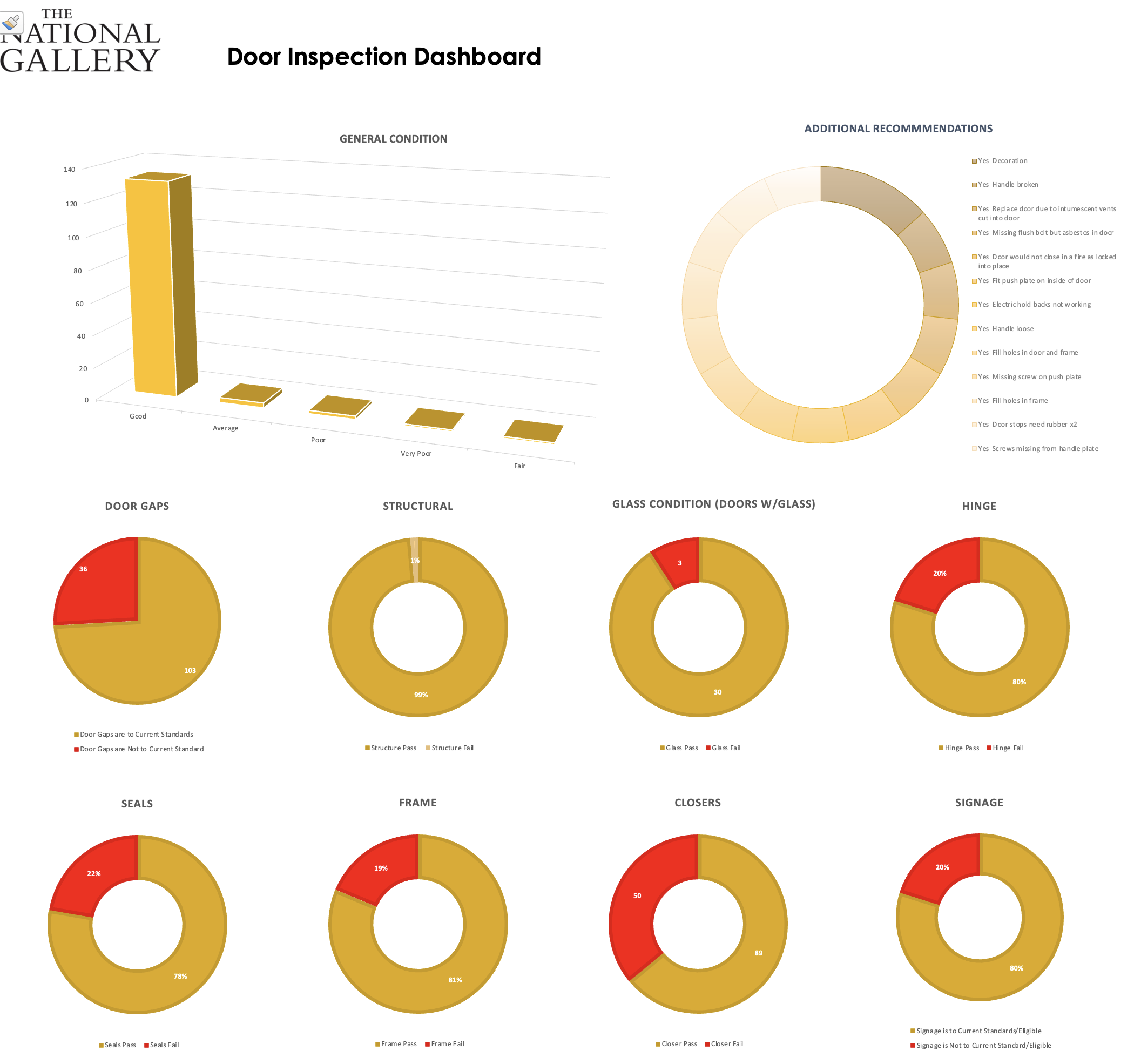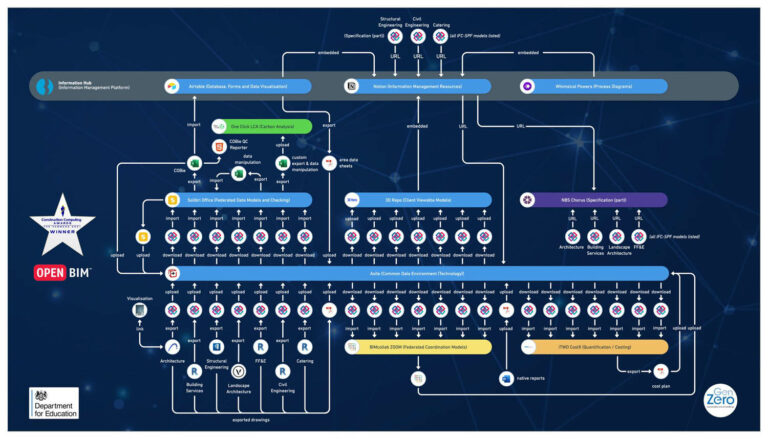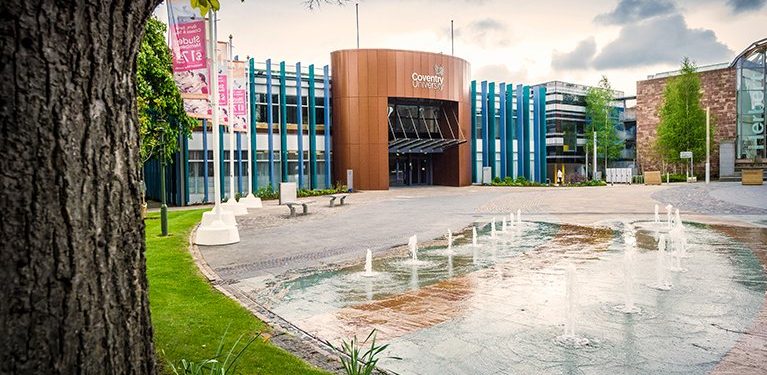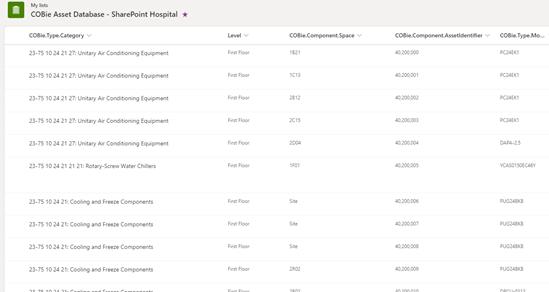London’s National Gallery Estate Management boosted by IM Standards
In 2019 the National Gallery produced a short prospectus for a BIM implementation project – BIM had never been used in the gallery previously and we were aware that capital projects in the coming years would be severely compromised without it. We were also aware that BIM held many possibilities for both managing maintenance of the estate and facilitating the implementation of digital policies for all of the gallery’s business.
Our digital transformation consultant emphasised from the outset that the project would be a journey where unexpected opportunities and solutions would surely arise from a structured analysis and understanding of our people and processes. This has proved to be the case in some surprising and exciting ways and although our progress has been a little chequered, we are now confident that our understanding of BIM’s benefits goes way beyond our initial purpose of managing the maintenance and development of the built estate – it will have a huge impact on our ability to manage data across the Gallery and on virtually every aspect of how we plan and manage our business.
Our early focus was to procure a 3D model as a reference for capital projects and a dataset for managing the maintenance of our built assets. With a 3D representation offering a visual cue, having our data and processes in order was obviously crucial.

Our consultant drew up an 11 step roadmap to get us to a point where we could confidently procure a 3D dataset and during this process, there was a continual emphasis on the use of published standards. We discovered, for example, that our very bespoke asset categories, developed over many years, could be gradually replaced with the UK’s Uniclass classification system; a standard system should deliver multiple efficiencies in our supply chain and tendering procedures in the years to come. Similarly, we are embracing IFC (Industry Foundation Classes) as an international open standard way of describing our physical assets and their properties. Knowing that our rather complicated legacy systems can eventually catch up with modern international standards is transformational for us from both an operational and a heritage perspective.
We discovered that not everything in our roadmap had to be done at once – so far, we have completed about 4 of the steps but already have a model that we are using for 3 separate use cases to generate engagement with our stakeholders. Two of these use cases are focused on other departments in the Gallery – another unexpected development along the way.
Helpfully, assisting in winning internal hearts and minds, we discovered that the Estates department use case (which is aimed at managing the inspection and maintenance of fire doors) can be developed via software that we already have; we don’t need to spend money on additional software and we don’t ‘need’ the model to test or implement the data management principles involved at this stage. Our consultant developed a highly effective dashboard that collates our door data from the rolling programme of inspections and remedial work. He has matched the aspects of each door to the standard list within the IFC schema and the dashboard now gives a plain language, immediate and reliable comprehension of our compliance status and data which previously languished away in multiple documents and locations.
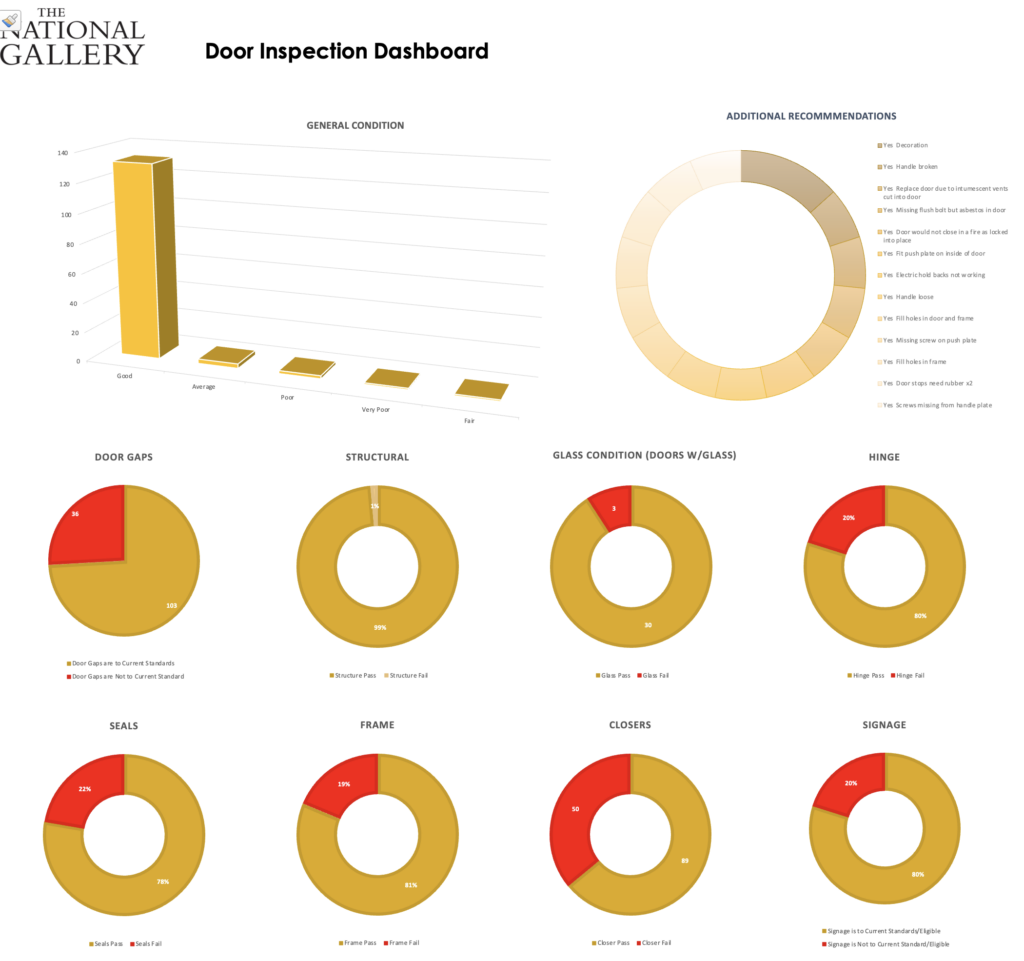
Engaging a digital transformation specialist has been fundamental to understanding both the complexities and the opportunities of the journey, keeping us disciplined on reaching milestones while also developing a vision to deliver innovative and collaborative digital interaction with our colleagues across the organisation.
The journey is not just BIM, it is about developing digital technologies and data management at both use case and strategic levels to transform the experience of our national collection of art, and the great institution that houses it, for everyone.

